Altan T. Metal Forming Handbook
Подождите немного. Документ загружается.


6Solid forming (Forging)
6.2Benefits of solid forming
6.2.1 Economic aspects
The benefits offered by solid forming, compared with other production
processes, can be summarized as superior quality combined with lower
manufacturing costs. The standard of quality is due to the favorable
mechanical properties of cold and warm forged parts, such as high strength
and toughness, an uninterrupted fiber flow, close tolerances and a good sur-
face quality. The cost benefit achieved using forging techniques can be con-
siderable, but does depend on the specific part considered and on the pre-
viously used production method. Individual cost factors include:
–Low material input:Almost the complete initial volume of the billet is
processed into the finished part. Compared to machining, savings
can be as great as 75% (Fig.6.2.1).Where high-alloyed materials are
used, the benefit of low material input becomes increasingly signifi-
cant in relation to overall manufacturing costs.
–Use of low-cost raw materials:Strain hardening that occurs during warm
and cold forming results on the one hand in higher levels of flow
stress, but also in higher ultimate and fatigue strength. Therefore, it is
possible to use lower-cost steel grades with lower initial strength char-
acteristics in order to achieve the same mechanical properties obtain-
able in machined parts. A workpiece with, for example, a hexagonal
geometry is produced where machining methods are used from costly
extruded material with a hexagonal cross section. By forging instead of
machining, this type of part can be formed using substantially less
expensive round bar as starting material.
Metal Forming Handbook / Schuler (c) Springer-Verlag Berlin Heidelberg 1998

–Reduction/elimination of subsequent machining:Subsequent metal re-
moval processes are frequently only necessary in the case of geome-
tries which present a particular problem for forming processes, for
example recesses, undercuts or threads. By using cold forging tech-
niques, substantial savings can be achieved by reducing investment
in machine tools for metal-cutting and in metal-operating staff.
–Minimal process, logistic and transport costs:This benefit is created as a
result of the low cost of automation where transfer systems are used.
–Generally high productivity:Small workpieces produced from wire on
horizontal forging machines can be manufactured at stroking rates of
up to 200/min. For larger parts manufactured by forging from billet in
vertical presses from billet, production speeds of up to 50 parts/min
are possible.
–Facility for integration of several functions/geometries in a single com-
ponent:Cold extruded parts often provide an opportunity for “re-engi-
neering” to create lower-cost designs. The aluminium oil filter hous-
ing illustrated on the left in Fig. 6.2.2,for example, is cold extruded in
a single piece. This allowed the production of three individual com-
ponents – flange, drawn cup and connecting piece. Thus, the com-
plex welding operation required previously (Fig. 6.2.2, right)could be
reduced to a single extrusion operation.
442
Solid forming (Forging)
Fig. 6.2.1 Comparison of the input weight and achievable geometry for machining and
forming processes
Ø53
85
billet weight
1.275kg
Ø50
80
Ø45
32
Ø52
86
billet weight
0.398kg
starting workpiece and fiber flow
in a machined part
starting workpiece and fiber flow
in a forged part
Metal Forming Handbook / Schuler (c) Springer-Verlag Berlin Heidelberg 1998
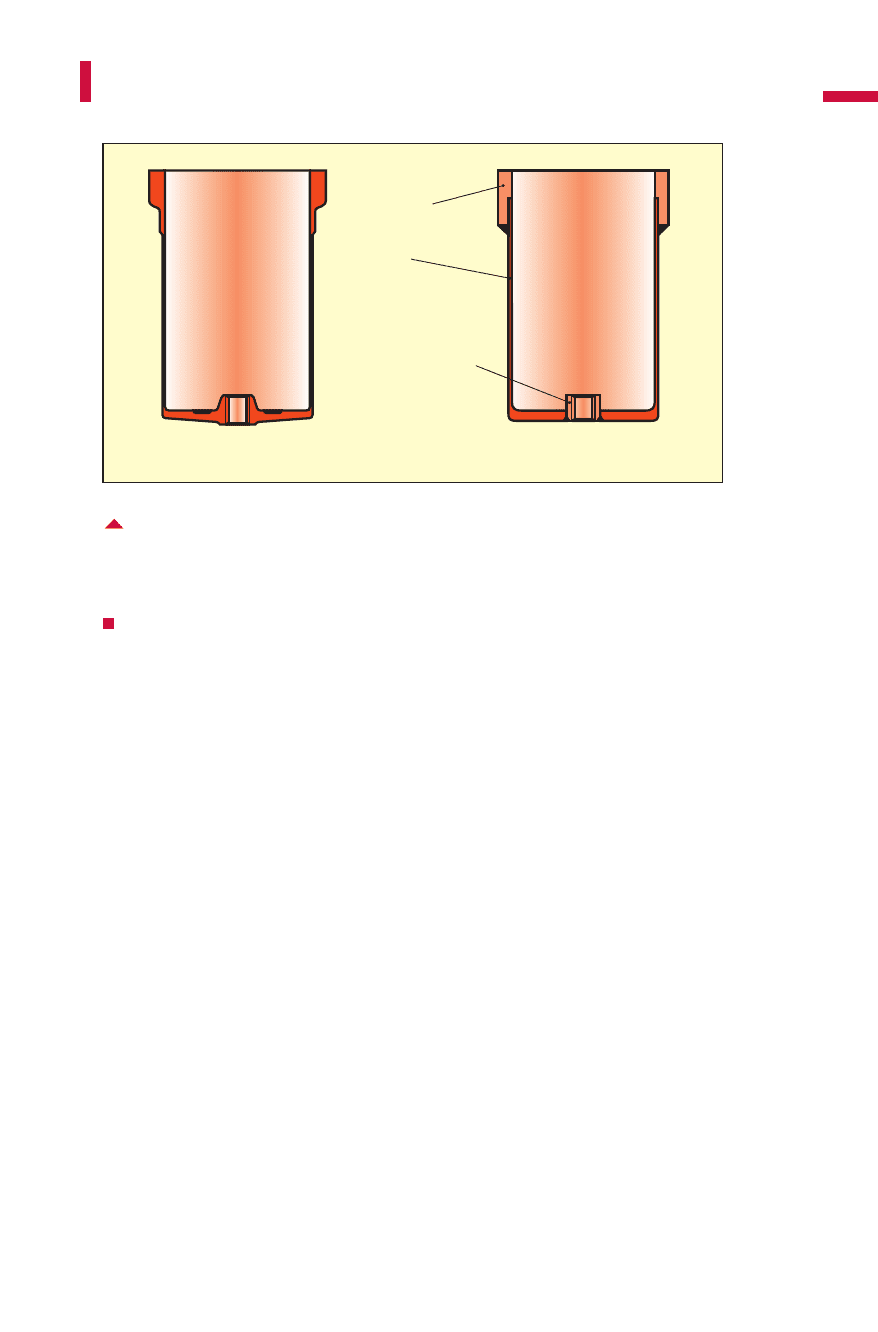
6.2.2Workpiece properties
Due to the high degree of geometrical accuracy, surface quality and
highly favorable mechanical properties, the workpiece characteristics
of cold forged components are generally very good. The mechanical
characteristics depend on physical factors and can only be influenced
to a limited degree. The factors influencing operating accuracy in the
production of precise geometries and surface properties, which are list-
ed in Table 6.2.1, must be taken into consideration in the forge plant.
In principle, the primary requirement is for a highly precise and rela-
tively rigid forging press. If such a press is not available, even full com-
pliance with all the other factors such as excellent die design cannot
compensate for this deficiency. Next, in order of importance are the
volume control of the billet, the process concept, etc. Compliance with
and monitoring of all the process parameters thus ensure to achieve the
required service characteristics of a component. However, it is neces-
sary to consider that at the same time production costs also increase.
Despite the high degree of cost reduction achieved in automated
forging lines, it is only with well trained staff, who are capable of ensur-
ing correct operation of the equipment, that it is possible to achieve a
satisfactory return on such a large capital investment. To highlight the
443
Benefits of solid forming
Fig. 6.2.2 Oil filter housing – extruded single component compared to three-part welded
configuration
extruded welded
flange
cup
connecting piece
Metal Forming Handbook / Schuler (c) Springer-Verlag Berlin Heidelberg 1998

importance of the human factor here, this has been included as a sepa-
rate item in Table 6.2.1. The skill of the press operator is paramount in
the successful operation of the production system. He/she takes the
influencing factors into account and evaluates them.
Tolerances
Achievable ISO tolerances for different types of cold forging and com-
plementary processes are summarized in Table 6.2.2. The “variation
444
Solid forming (Forging)
Table 6.2.1: Classification of process parameters that affect the geometrical accuracy and surface
quality of a forged part
Line: Machine kinematics, stiffness, off-center load
capacity, gib precision, heating behavior
(warm), natural frequency
Automation weight control, careful feed and discharge,
positioning accuracy, transfer, press force
control
Heating type, temperature, temperature control
Cooling temperature control
Billet: Starting material analysis, strength, microstructure
Material form
wire, bar, thick sheet; rolled, peeled or drawn
Manufacturing process shearing, sawing, blanking
Pre-treatment possibly soft-annealing, pickling,
phosphating, coating
Process: Processing sequence
No. of steps single-step, multiple-step, process
combination
Temperature hot (h), cold (c), warm (w)
Intermediate treatment recrystallization, normalization (warm),
pickling, phosphating, coating
Lubrication and cooling additional lubrication, spraying, flooding
(warm), lubricant and coolant (warm)
Clearance for part transport
Die: Precision die concept, details, production process,
adjustment of upper and lower die,
mechanical die deflection, thermal die
expansion
Wear die material, surface, coating, change
interval
Human element: Die designer,
die manufacturer,
operating staff,
training and instruction specialized skills
Metal Forming Handbook / Schuler (c) Springer-Verlag Berlin Heidelberg 1998
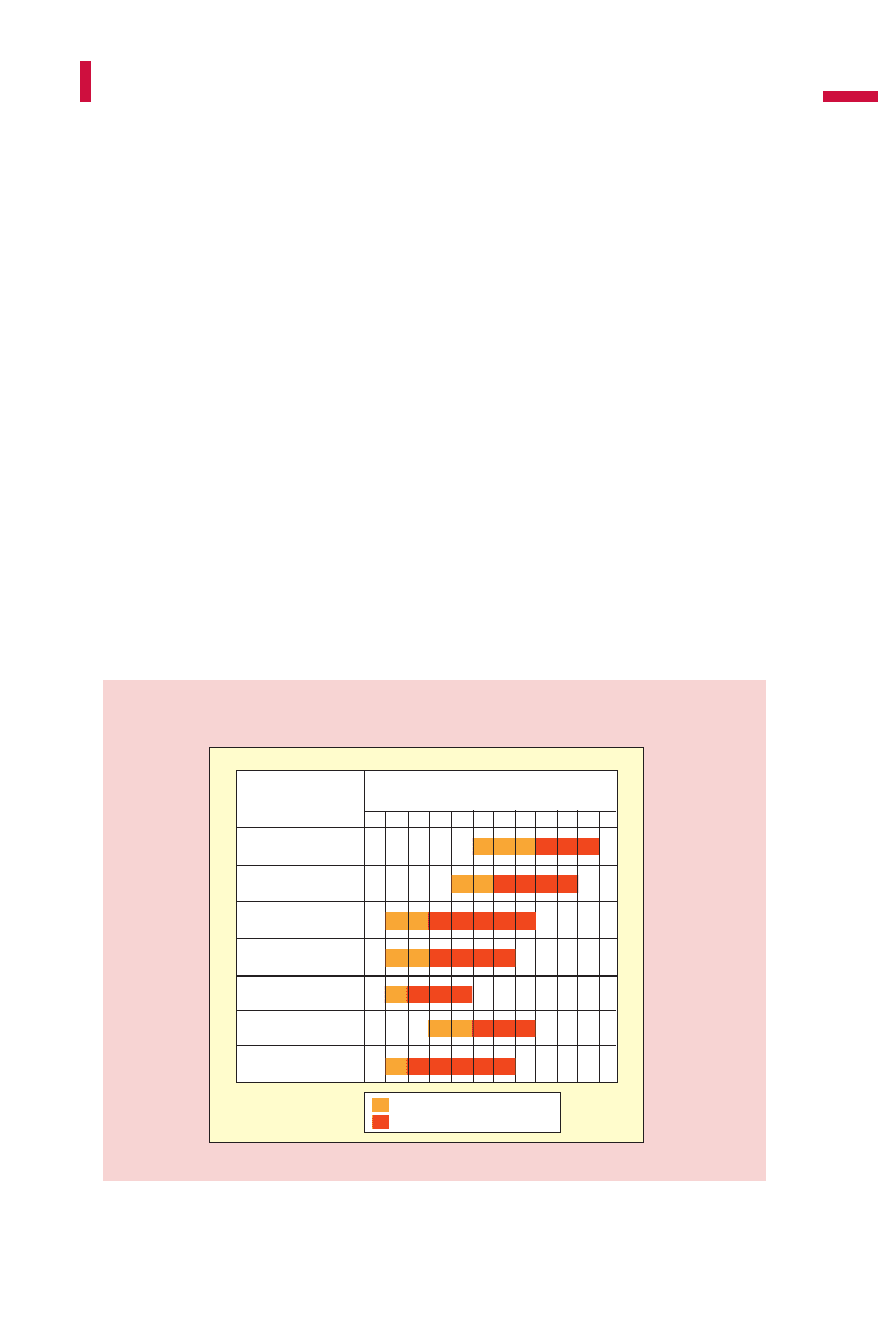
Table 6.2.2: ISO tolerances for the cold extrusion and complementary processes (VDI 3138)
range” of a forging process indicated here should be interpreted so that
smaller, lighter-weight components fall in general to the left-hand side
of the bar (lower tolerance fields) and larger, heavy-duty components
fall mainly to the right-hand side (wider tolerance fields). The red sec-
tors are tolerances which can be achieved under normal conditions.
The orange areas are ISO tolerances which can be achieved in special
cases but with larger effort and cost. This information also indicates
that the ironing and reducing processes permit the improvement of
accuracy levels by as much as two quality levels. The high degree of
dimensional accuracy is not achieved equally for all the dimensions of
a component, but should be restricted to dimensions that are critical
for functional or material removal considerations.
The achievable dimensional tolerances (normal, narrow) for cold
extrusion or the process combination warm extrusion and subsequent
cold sizing are indicated for the three most frequent forming processes,
solid forward extrusion, cup backward extrusion and ironing (Tables
6.2.3 to 6.2.5). This information is given relative to the main dimen-
445
Benefits of solid forming
formingprocess
hotextrusion
warmextrusion
warm/coldextrusion
coldextrusion
ironing
upsetting
opendieforwardextrusion
ITspecificationasperDINISOquality
5 6 7 8 11 12910 15161413
achievablewithspecialmeasures
achievablewithoutspecialmeasures
Metal Forming Handbook / Schuler (c) Springer-Verlag Berlin Heidelberg 1998
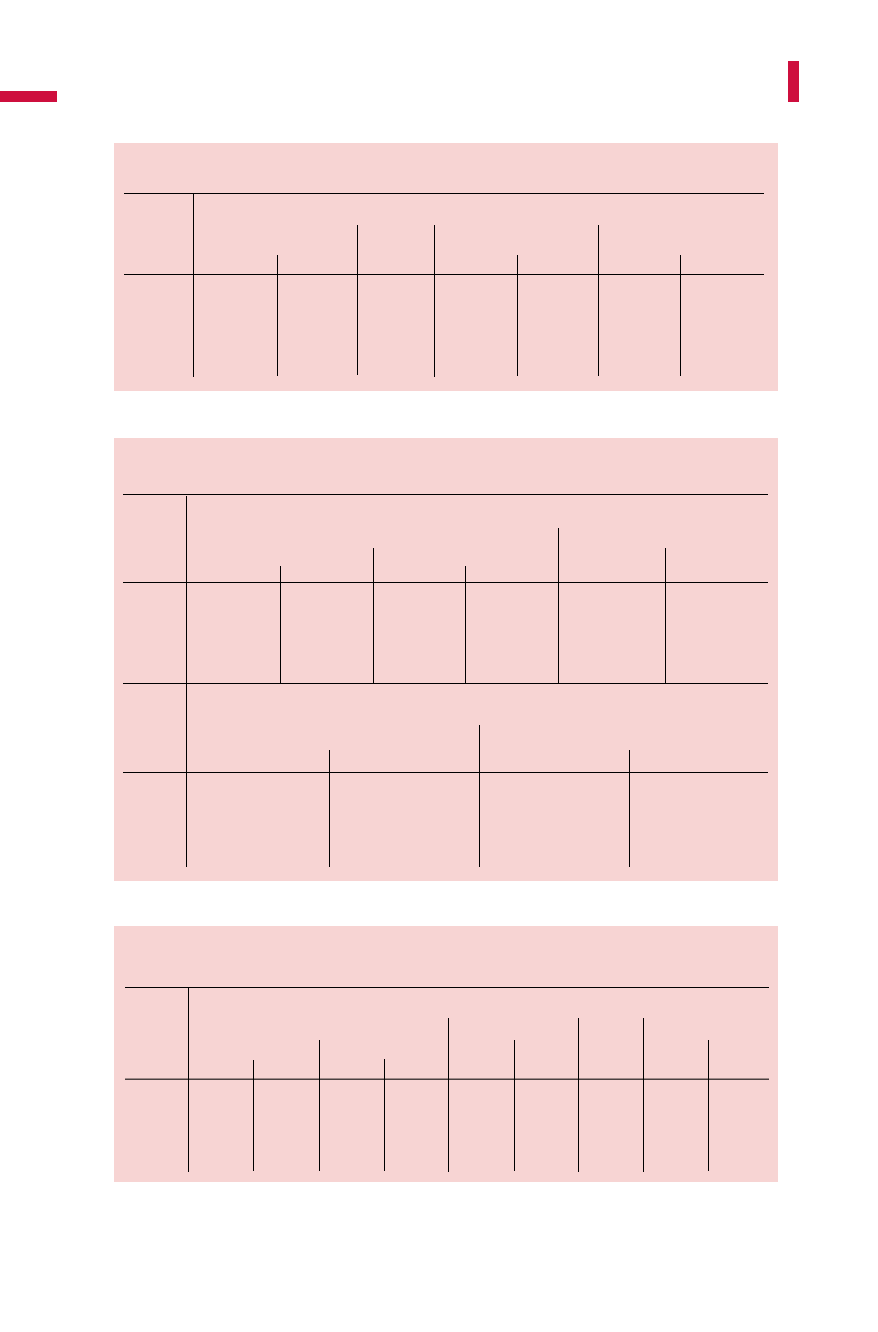
Table 6.2.4: Diameter, concentricity, wall and web thickness tolerance of backward extruded cups,
in mm
D
tolerances
up to
diameter run-out
mm
normal narrow normal narrow
DdDd
25 0.20 0.15 0.10 0.03 0.25 0.10
50 0.30 0.20 0.125 0.035 0.30 0.15
75 0.35 0.30 0.15 0.04 0.35 0.20
100 0.40 0.50 0.175 0.06 0.40 0.25
s, h
tolerances
up to
wall thickness s bottom thickness h
mm
normal narrow normal narrow
2 0.10 0.075 0.25 0.15
5 0.15 0.10 0.35 0.20
10 0.25 0.15 0.45 0.30
15 0.35 0.25 0.55 0.40
446
Solid forming (Forging)
Table 6.2.3: Diameter, length and deflection tolerance of solid forward extruded parts, in mm
D
tolerances
L
up to
diameter D
up to
length deflection B
mm
normal narrow narrow narrow
mm
normal normal
25 0.10 0.02 150 0.25 0.20 0.15 0.03
50 0.15 0.08 200 0.75 0.50 0.25 0.05
75 0.20 0.15 300 1.50 1.00 0.35 0.07
100 0.25 0.18 450 2.00 1.50 0.50 0.10
Table 6.2.5: Diameter, concentricity, wall thickness tolerance in mm of tubular components
produced by ironing
D
up to
mm
diameter
run-out
s
up to
mm
wall thickness s
normal
narrow normal
Dd
Dd
25 0.15 0.10 0.075 0.025 0.25 0.10 1 0.075
50 0.25 0.20 0.10 0.03 0.30 0.15 2 0.075
75 0.30 0.25 0.125 0.35 0.035 0.20 4 0.10
100 0.35 0.30 0.15 0.45 0.045 0.25 6 0.10
0.035
0.04
0.05
0.07
narrow
normal
narrow
tolerances
Metal Forming Handbook / Schuler (c) Springer-Verlag Berlin Heidelberg 1998
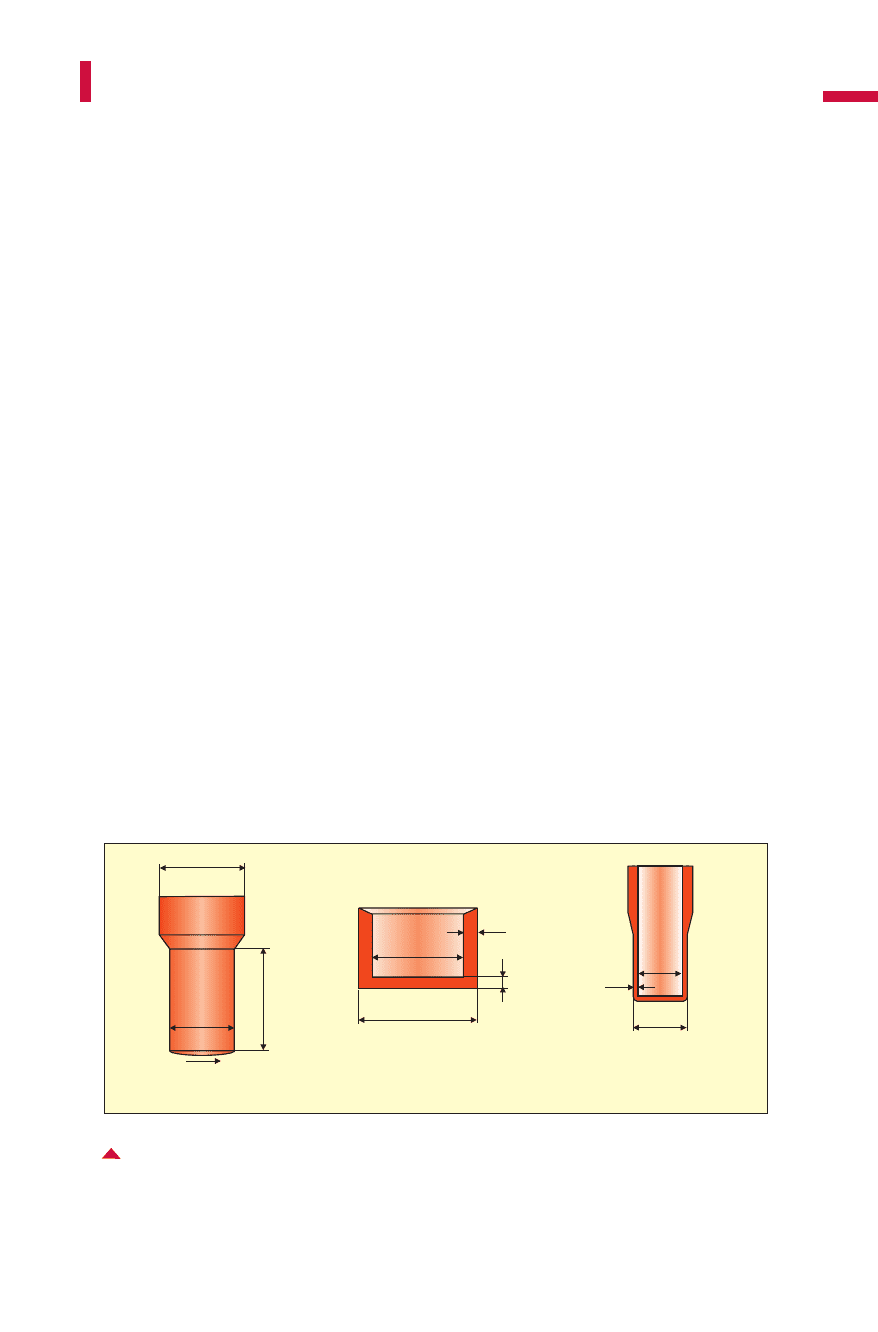
sions from Fig.6.2.3.As already indicated, closer tolerances can be
achieved as a result of special measures such as centering of upper and
lower dies.
The length tolerances refer to the shoulder lengths within the upper
or lower die, not to the overall length of the workpiece (including
excess material).
Surface finish
On net shape and near net shape components which do not need rema-
chining, the surface roughness is an important quality characteristic.
The contact surfaces of the core of formed claw poles, for example,
must not exceed a surface roughness of R
z
= 10mm, as otherwise the
required magnetic flux characteristics cannot be achieved. By the same
token, a similar requirement applies to forged gears. Table 6.2.6 pro-
vides a summary of the achievable surface roughness properties R
z
and
R
a
for different forming processes. The orange areas are values which
are measured before, the red areas are values which are measured after
removal of the lubricant layer. Guideline values on the phosphate layer
are R
a
= 0.3 – 0.8mm and after removal approx. R
a
= 0.6 – 2.5mm.
The surface quality is positively influenced by a high specific pres-
sure, high relative velocities and surface quality prior to forging.
Forming processes with high specific pressures and relative velocities
447
Benefits of solid forming
Fig. 6.2.3 Main dimensions in solid forward extrusion, backward cup extrusion and ironing
process
forward rod extrusion
backward cup extrusion
ironing
s
d
D
D
D
d
h
s
d
B
L
Metal Forming Handbook / Schuler (c) Springer-Verlag Berlin Heidelberg 1998
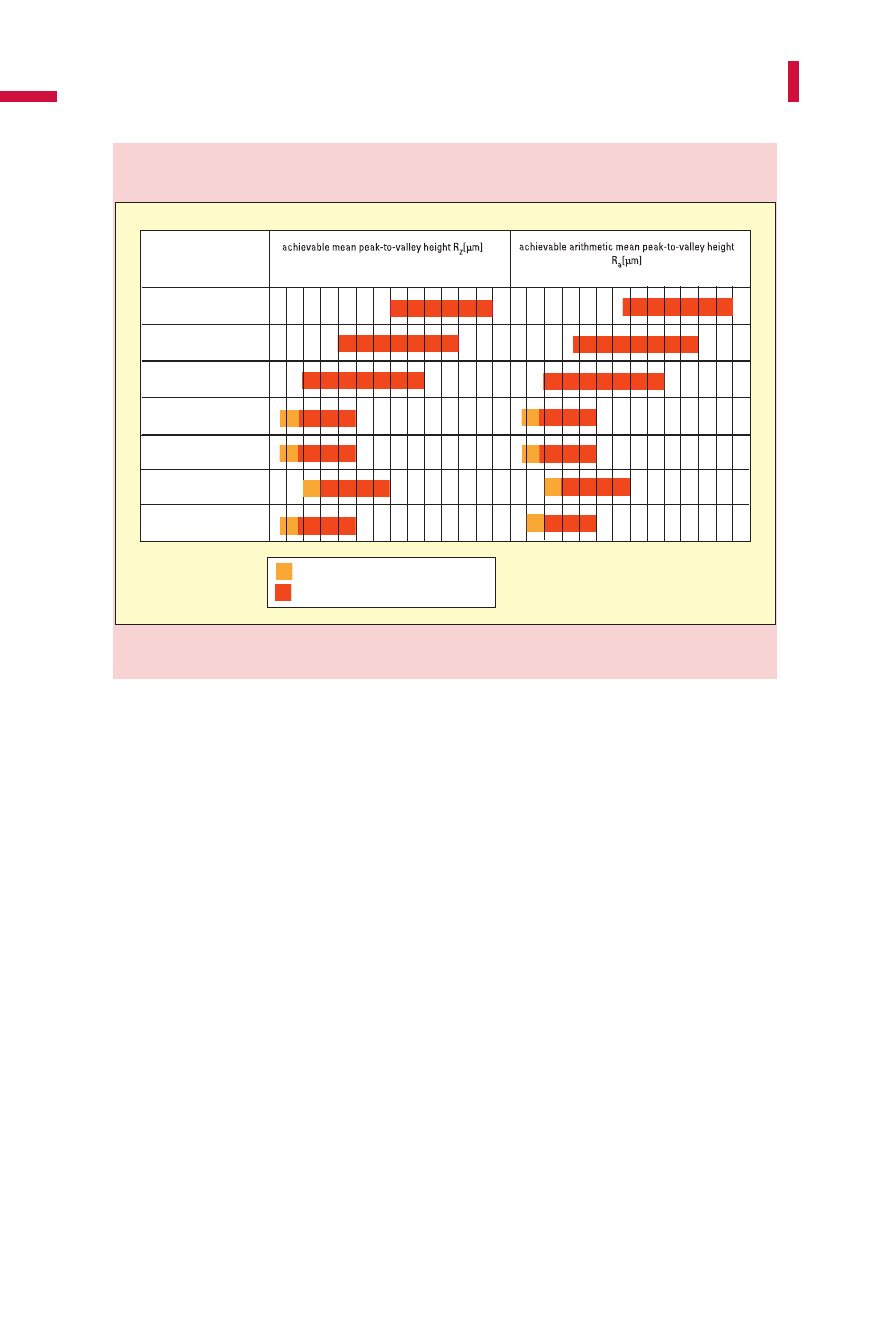
are open die extrusion, ironing and solid forward extrusion. The surface
properties are influenced here by the following factors:
starting material: hot rolled, sand blasted, peeled, cold drawn
interface: sheared, sawn
intermediate annealing: scale free: under inert gas
with scale: sand blasted, pickled
Mechanical properties
The hardness, tensile strength and yield strength are increased by plas-
tic flow. However, at the same time the values for notch impact
strength, elongation and necking are decreased. Depending on the
degree of true strain, in the case of steels with low and medium carbon
content, tensile strength can increase by up to 120%, yield strength by
between 100 and 300%, and hardness by between 60 and 150%.
448
Solid forming (Forging)
Table 6.2.6: Surface qualities R
z
/ R
a
achieved using different forging methods
forming process
hot extrusion
warm extrusion
warm/cold extrusion
cold extrusion
ironing
upsetting
open die extrusion
5 121518 2030405060708090100
0,5
2
1 3 4 6 8 10 12
15 20 25 30
before removal of the lubricant carrier layer
after removal of the lubricant carrier layer
Metal Forming Handbook / Schuler (c) Springer-Verlag Berlin Heidelberg 1998

Where no heat treatment is carried out, this effect can be utilized in
order to replace high-alloy steels by lower-alloy grades. During the
development of the process plan, it is possible within certain limits to
achieve specified strength values in certain sections of a component by
suitable choice of the billet diameter and the process sequence.
449
Benefits of solid forming
Metal Forming Handbook / Schuler (c) Springer-Verlag Berlin Heidelberg 1998

6Solid forming (Forging)
6.3Materials, billet production and surface treatment
Materials used in solid forming are mainly unalloyed, low-alloy and
high-alloy carbon steels, non-ferrous light and heavy alloys such as alu-
minium, magnesium, titanium and copper and their alloys (cf. Sect.
4.2.2). Significant factors in the selection of materials are formability
(flow stress), the path of the flow curve (cf. Fig. 6.1.5), the permissible
fluctuations in material composition and issues related to billet prepara-
tion including preliminary (heat treatment, coating) and intermediate
treatment.
6.3.1Materials
Steels
Low-carbon and low-alloy steels are particularly suited forcold forming.
With a carbon content of up to 0.2%, the conditions for forming are very
favorable, up to 0.3% favorable and up to 0.45% difficult, which results in
low formability, true strain and higher press forces. Phosphorus and sul-
phur content should remain below 0.035%, as these components tend to
reduce formability. The content of nitrogen is restricted to less than 0.01%
for reasons of susceptibility to ageing. Pre-heat-treated steels can be used for
parts which are sensitive to warping (valve tappet rods) and whose high
strength (upto1,100N/mm
2
) permit only minimal deformation. In some
cases, micro-alloyed steels containing boron, which permit penetration
hardening, are replacing alloyed steels with the prescribed full heat treat-
ment.
All steels which can be cold formed, can also be warm formed. How-
ever, it should be emphasized that even steels containing a higher carbon
Metal Forming Handbook / Schuler (c) Springer-Verlag Berlin Heidelberg 1998
